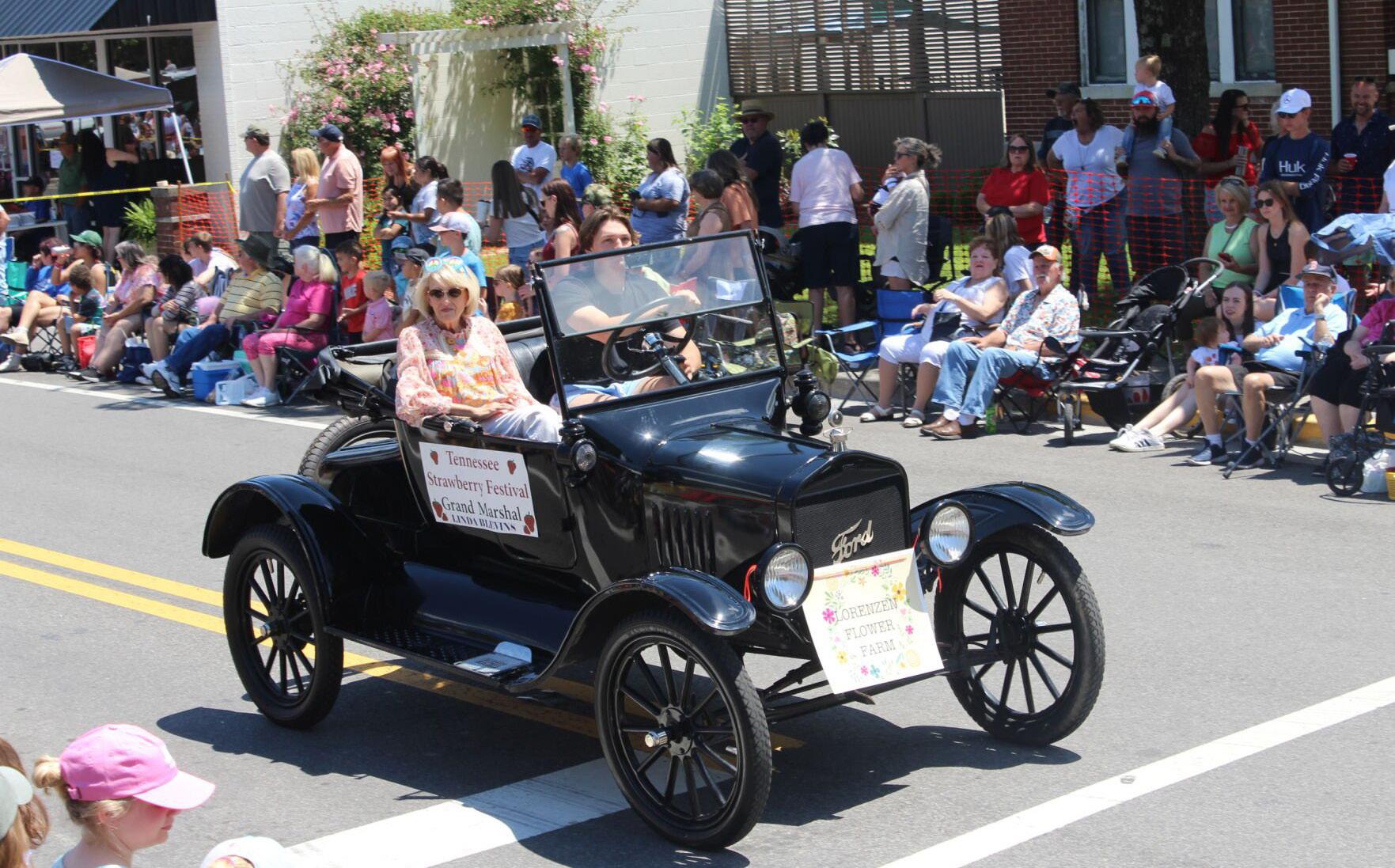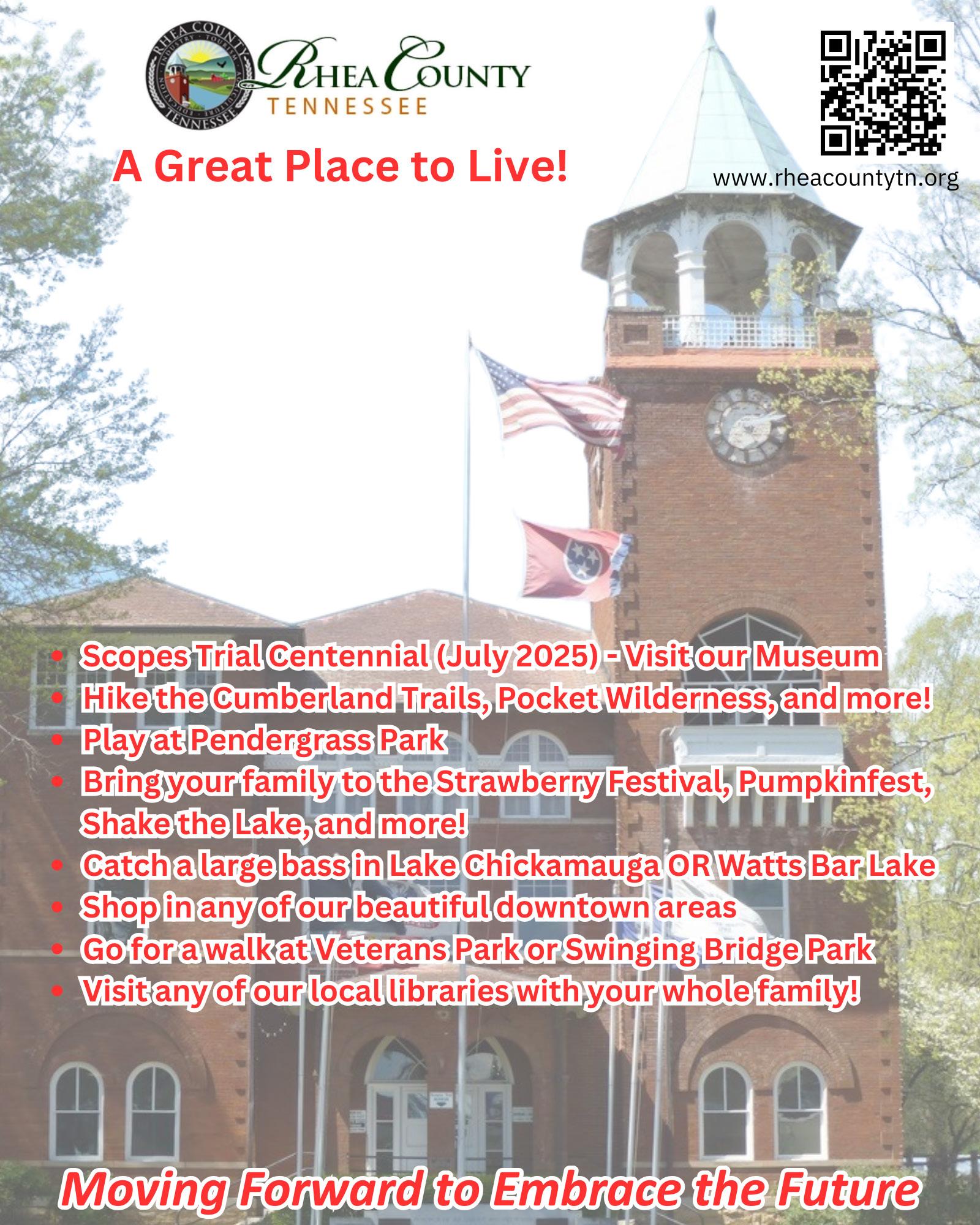




Welcome to Rhea County. Whether you’re a history buff looking to explore pivotal moments in American history such as the 1925 Scopes Trial or the Trail of Tears or love the outdoors and spending time on hiking trails or lounging along the shores of Watts Bar Lake, you’ve come to the right place.
Nestled between the Tennessee River and the Cumberland Plateau and only a short drive from major cities such as Knoxville and Chattanooga, Rhea County offers visitors convenient fun for the entire family.
Visitors can stroll through the newly-renovated Rhea Heritage and Scopes Trial Museum in the basement of the Rhea County Courthouse, site of the 1925 Scopes Trial, and learn the story behind one of the most famous trials in world history.
Or perhaps you want to delve into the arts. Then take in a play at Spring City’s Tennessee Valley
Theatre, which produces and performs not only nationally known plays but locally written plays as well.
Are you the outdoors type? Rhea County is home to Watts Bar Lake and Chickamauga Lake, both replete with lakeside retreats and fishing hotspots sure to provide a relaxing day on the water. Or you can take a stroll through the LaurelSnow State Natural Area, which has an abundance of hiking trails, streams and rivers and provides some of the most beautiful scenery in Tennessee.
In this 12th edition of Rhea County Revealed, you’ll find information that will help you discover all the fun and natural beauty that Rhea County has to offer. The Herald-News is proud to provide visitors with the only guide that will ensure your visit to Rhea County is an enjoyable one.
We look forward to your next visit!
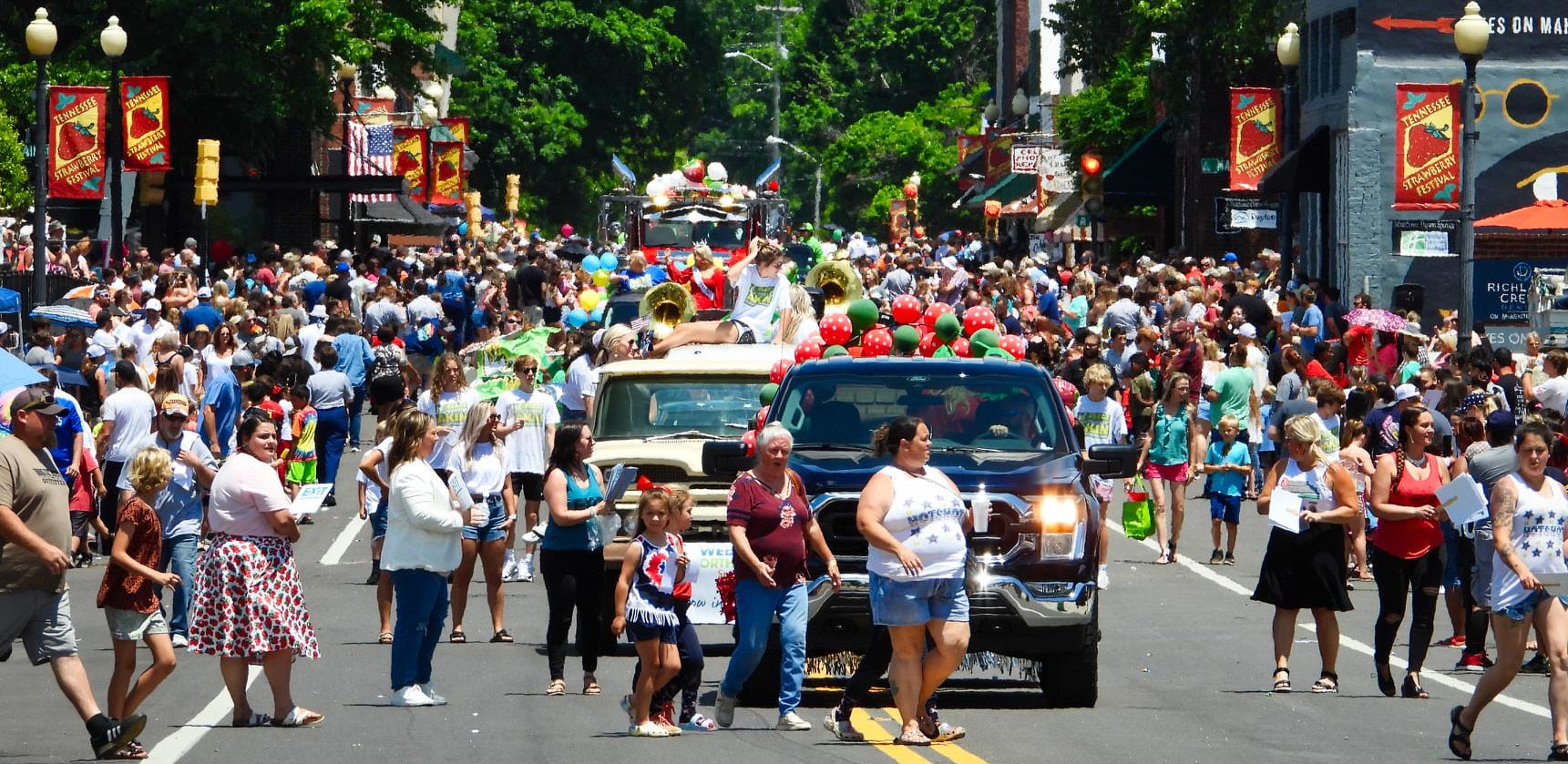
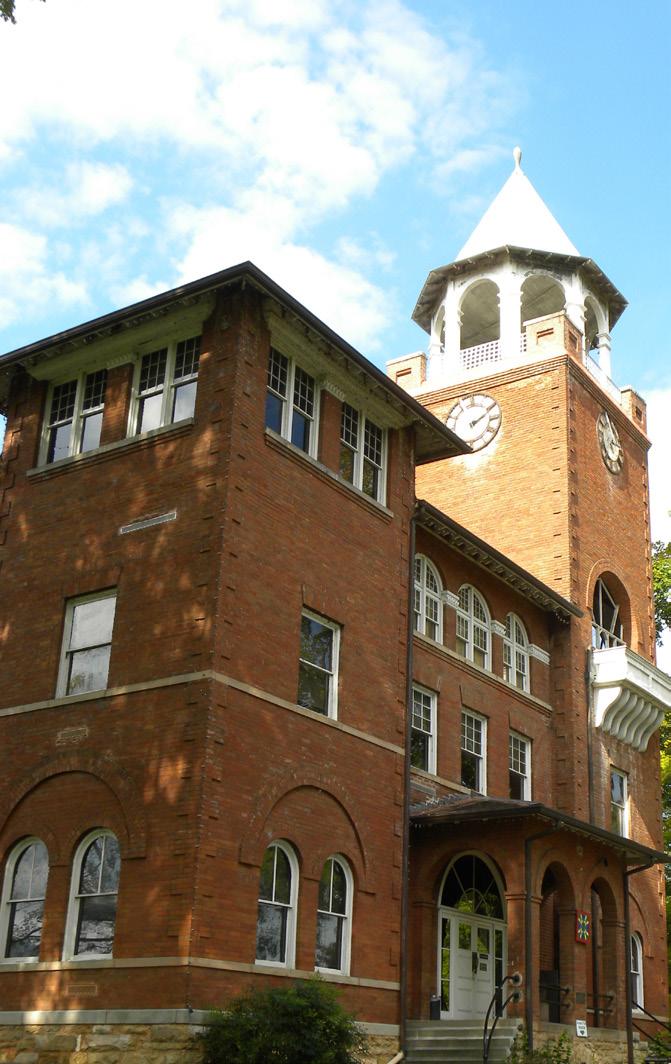
Whether it’s a night out at the theater or an afternoon visiting local museums, there is no shortage of attractions in Rhea County.
Visitors can also take a hike through the Laurel-Snow State Natural Area or visit local farms and historic trails.
No matter where you go in Rhea County, you are sure to find something fun for every member of your family.
Laurel-Snow State Natural Area is a 2,259-acre natural area located in Rhea County. The natural area occurs on the Walden Ridge of the Cumberland Plateau and contains a section of gorge that is deeply dissected by Morgan, Henderson, Laurel and Richland Creeks.
The site is named after two scenic waterfalls, Laurel Falls (80 feet) and Snow Falls (35 feet)
and features two prominent overlooks, Buzzard Point and Bryan Overlook.
The natural area also has scenic creeks, steep gorges, geologic features, a small stand of virgin timber and a wide variety of plants.
After about 1.5 miles of hiking into the natural area beside Richland Creek, the trail forks. You can reach Buzzard Point and Snow Falls by following the trail as it forks to the left going west. The trail to the right leads to Laurel Snow Falls and then eventually climbs to the top of the falls. The distance for both trails is about eight miles round trip.
The land use history of this area remains evident in places. Logging and deep mining took place in some portions of the area in the late 1800s and early 1900s. Some remnants of the mining activities can still be seen along the trail near the parking area.
Part of Richland Creek was dammed to serve as the Day-
ton Reservoir and was once the water supply for the town of Dayton. The low dam across the stream can still be seen, although water is no longer collected here for the town.
The Laurel-Snow trail was the first National Recreation Trail designated in Tennessee.
See http://www.americantrails.org/nationalrecreationtrails/ for more information.
Laurel-Snow State Natural Area is part of the Cumberland Trail State Scenic Trail, and the area includes trailhead parking and an open section of the Cumberland Trail.
See http://www.cumberlandtrail.org/ for general information and stipulations on backcountry camping in the area.
The Cumberland Trail, the state’s only linear state park, when completed, will be 300 miles in length cutting through 11 Tennessee counties from the Cumberland Gap National Historic Park on the Tennessee-Virginia-Kentucky border to Signal Point near Chattanooga.
Public access is allowed; parking and hiking trails are provided. The natural area has 10.5 miles of hiking trails.
Backcountry camping is by permit only. Call 423-566-2229 to obtain a permit or request more information.
Our current community theater began in Rhea County in 1989 when two members of the Spring City Women’s Club initiated efforts to organize a group interested in bringing live theater to the area.
teer hours.
With the conviction that yes, Rhea County should have a community theater, the Tennessee Valley Theatre developed.
In three short weeks the determined, can-do attitude of the core group produced a play selected by a play-reading committee, a fund-raising drive, a director and co-producers, announcement of auditions, publicity, set crew, ordering of play books, printing of tickets and posters and a place provided by a local resident.
Tennessee Valley Theatre opened with “Harvey” in June, 1989.
The theater sponsors summer children’s workshops to teach various acting and theatrical production skills to area students. Workshops conclude with a public performance by the participants.
The theater showcases the many talents of area residents, provides quality arts performances for the community and prepares future performers.
The theater is a nonprofit organization dependent on extensive volunteer services of many actors and stage crewmembers.
In addition to weekend performances, the theater produces theater as a part of their school curriculum.
Performances throughout the years have included seasonal classics such as “A Christmas Carol”, original plays from local artists, numerous Broadway

See ATTRACTIONS page 8






plays, monologues and musical shows.
Both local productions and presentations from area artists are included in the theater’s year-round programming.
This natural museum, begun in the 1970’s as a collection of plants and animals, now holds more that 100,000 items.
Included in its collections are rocks and fossils from coal mines in Rhea County, African lions, specimens of extinct species, preserved reptiles, skulls of various animals and even a replica of the head of Tyrannosaurus rex dinosaur.
Museum hours at the campus museum are available by calling Bryan College at (423) 775-2041.

In 2018, the Rhea Heritage and Scopes Trial Museum underwent significant remodeling and redesign. The new museum designs include story boards detailing the key players and moments surrounding the 1925 Scopes Trial as well as a section of the museum that highlights other moments in Rhea County history, such as the founding of the county, the arrival of the railroad and other important events in Rhea history. The museum also features an interactive touch screen display that will further showcase the history of the Scopes Trial and Rhea County. Pictured above, former Tennessee Gov. Bill Haslam tours the renovated museum in June 2018.
and Genealogical Society administers the museum located in the basement of the Rhea County Courthouse in Dayton.
The museum was established to preserve and present history related to the Scopes Trial.
The society has extended the museum exhibits to include various events and personalities important to the history of Rhea County.
The museum is open throughout the wee.
The museum is closed on Saturday during the months of January and February.

Located on Front Street in Spring City, the depot, originally built by the Queen and Crescent Railroad out of Cincinnati, Ohio, has been restored and now houses offices and a museum highlighting the history of the area.
The tracks of the railroad built for the purpose of extending travel and commerce to the south still carry trains through the area, but the passenger depot now tells the story of the area’s past through both permanent and changing exhibits.
A museum annex in the adjoining block is used for special shows and events.
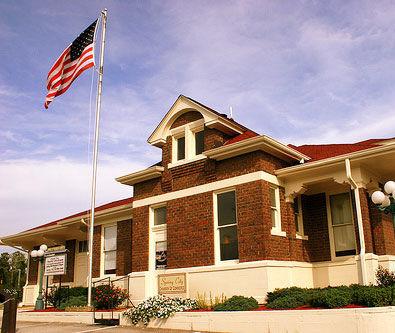

Inside the Dayton Electric and Water Building, located at 400 Main Street in Dayton, visitors can view original New Deal era artwork.
The canvas was painted by Bertram Hartman in 1937 as a part of the public works program initiated during The Great Depression to relieve the financial woes of the country.
The mural features picnickers on Johnson’s Bluff overlooking Cranmore Cove in Rhea County.
The building is open to the public Monday through Friday during normal business hours.
Nathan and Kristen Lorenzen are the owner and operators of Lorenzen Farm. They are passionate and dedicated to growing high quality flowers for the local community.
Lorenzen Farm uses sustainable agriculture practices including crop rotation, cover cropping and composting to keep the soil healthy. They do not use herbicides or pesticides.
Lorenzen Farm is generally open in March and April for flower picking.
The darm is located at 1374 New Bethel Rd. Dayton, TN, 37321, and can be contacted at (423) 883-4400.
Rhea County experienced skirmishes, military occupation, pillaging, looting and destruction during the war.
Even though no significant military battle was fought in Rhea County, the war was definitely felt by those whose family members joined the armies, those whose buildings were burned and those whose farms were plundered.
U.S. Gen. William T. Sherman was in Washington at one point during the war. Gen. Joseph Wheeler took his Confederate army through Rhea County on the way to their spectacular raid
against Union supply lines in the Sequatchie Valley.
Signs throughout the county designate Rhea County as a part of the national Civil War Trail.
Signs along highways 60 and 30 mark the route followed by Cherokees as they were forced from their ancestral lands east of the Mississippi to Indian lands in the west.
Blythe Ferry, located at the confluence of the Hiawassee River with the Tennessee River, was the transportation used to move the Cherokees into Rhea County.
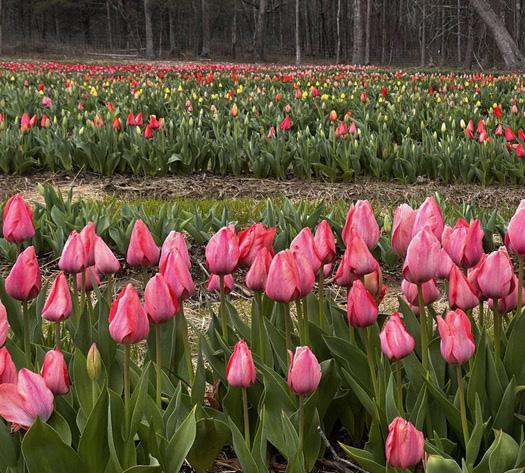

A state historical marker on South Market Street in Dayton records that the Trail of Tears crossed the Tennessee Valley through Rhea County.
A severe drought in the southeast during 1838 made ferry crossings difficult. Cherokees were encamped for weeks east of the river on land which today is Cherokee Removal Park.
The park is open Thursday through Sunday and includes an interpretive center and a river overlook.
Twenty-seven sites in the Dayton area have been identified as places significant in the history of the 1925 Scopes Trial. Metal historic markers have been placed by the Tennessee Historical Commission at many of the tour sites.
For more information, visit the Rhea Heritage and Scopes Trial Museum in the basement of the Rhea County Courthouse.
Every spring, summer and fall, farmers

load their trucks with produce and come to farmers on Washington Avenue in Dayton where they sell their fruits and vegetables to the public.
Sweet corn, succulent melons and juicy tomatoes are among the many locally produced items. In addition, some farmers sell regionally grown products.
Those driving through the county’s rural communities will also discover many vegetable stands on family farms.
Fall in Rhea County brings the bright colors of turning leaves and the fall harvest of orchards and farms.
Enjoy viewing the quilt squares as you walk through the town of Dayton or as you drive to Graysville in the southern part of the county.
The “Stars of Downtown Dayton” display eight star designs used to piece or appliqué quilts. Replicas of the quilt squares are affixed to the exterior of downtown buildings.
Along the way, browse at the town’s architecture, stop for a refreshment, visit the

courthouse museum and discover the bargains in the stores.
The Graysville square is taken from the pattern of a local resident for her hand-sewn coverlet.
The Quilt Trail celebrates the Appalachian skill, which was both a creative expression and a functional household item.
This trail provides a reminder of an artistic treasure of our rich Appalachian heritage.
Many local folks travel west on Highway 30 just across the Rhea County line on Walden’s Ridge to enjoy the fruits of the harvest at Wooden’s Apple House.
Now under the management of the third generation of Woodens, the Apple House serves treats of apple dumplings, pies, cider and more.
The warehouse sells to the public and exports apples throughout the country.
Many families enjoy outings to Wooden’s Apple House to select pumpkins for fall jacko-lanterns.
Rhea County’s beautiful scenery and abundant shoreline make it the perfect place to spend a day fishing on the water.
Several national fishing tournaments have begun to call Dayton’s Chickamauga Lake home, including the FLW Tour, Bassmaster Weekend Series and Heartland Anglers.
Portions of Chickamauga and Watts Bar Lakes and the Tennessee River snake their way through the county, and there are several types of fishing opportunities available in Rhea County reservoirs and their tributaries.
In regards to these reservoirs there are many species that may be targets for anglers such as black bass, crappie, sunfish, sauger, walleye, striped bass, catfish and trout.
With the recent increase in the number of national fishing tournaments choosing to settle in Rhea County, local tournament organizers have come to call Dayton the “New Bass Fishing Capitol of the South.” Visit www.fishdayton.com for more information about upcoming fishing tournaments, some of which have been and will be nationally televised.
The City of Dayton recently installed pickleball court and a futsal court in he downtown Dayton area that has attracted large-scale touranments and pickup game players alike.
Those interested in pickelball, a game semilar to tennis and ping pong, can visit one of 12 courts avaialable in the area. Six courts are lo-
cated on Walnut Street and six courts are located at Alabama Avenue, both locations in downtown Dayton.
Additioanlly, for those interested in a sport similar to soccer that is played with smaller teams and on a small court, visit the futsal court at the corner of Church Street and Alabama Avenue where games are constantly being played.
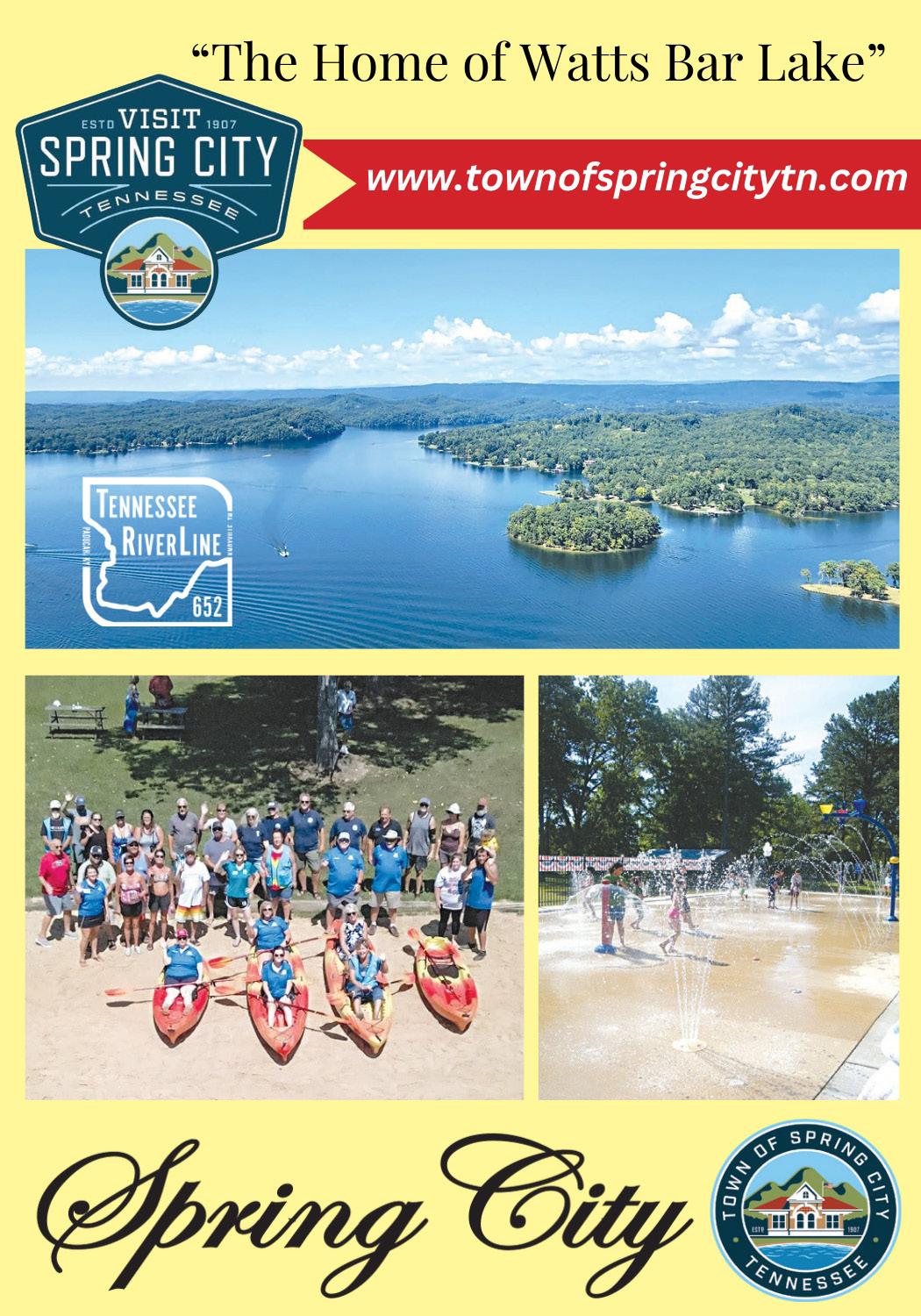
In 2024, representatives from the City of Dayton and the BlueCross BlueShield of Tennessee Foundation recently gathered to celebrate the grand opening of the BlueCross Healthy Place at Pendergrass Park.
The BlueCross BlueShield of Tennessee Foundation provided $4 million for the project build and an additional $800,000 for a maintenance fund, bringing the total investment in the space to $4.8 million.
Pendergrass Park is a municipal park located off Main Street in Dayton. The city applied for
BlueCross Healthy Place funding in the hopes of bringing additional amenities to the space and making it a gathering place for residents. Construction began during the summer of 2023.
BlueCross Healthy Places are designed to strengthen communities across Tennessee by providing neighbors with places for connection and healthy activity. They are developed to be accessible for visitors of all ages and abilities.
“The City of Dayton wants to thank the BlueCross BlueShield of Tennessee Foundation for choosing us to receive BlueCross Healthy Place funding,” said Dayton
Mayor Hurley Marsh.
“Without their generosity, we would not have been able to make so many improvements to our park. We are excited to share the revitalized park with community members, and we know our families and their children will enjoy this all-inclusive and accessible facility for years to come.”
Keith King, manager of the BlueCross Healthy Place program, added, “We’ve enjoyed partnering with the City of Dayton on the revitalization of Pendergrass Park, and we’re excited to celebrate the re-opening of this popular space. We hope the new amenities
will make the park more accessible for everyone and enhance Dayton’s strong community spirit.”
Features in the new space include:
- Ramped, accessible play areas for ages 2-5 and 5-12
- Splash pad
- Fitness area
- Pavilions
- Benches - Restrooms
The play area is constructed with accessible poured-in-place surfacing for visitors using mobility devices.
To date, the BlueCross Foundation has invested $59 million in BlueCross Healthy Place projects across the state.
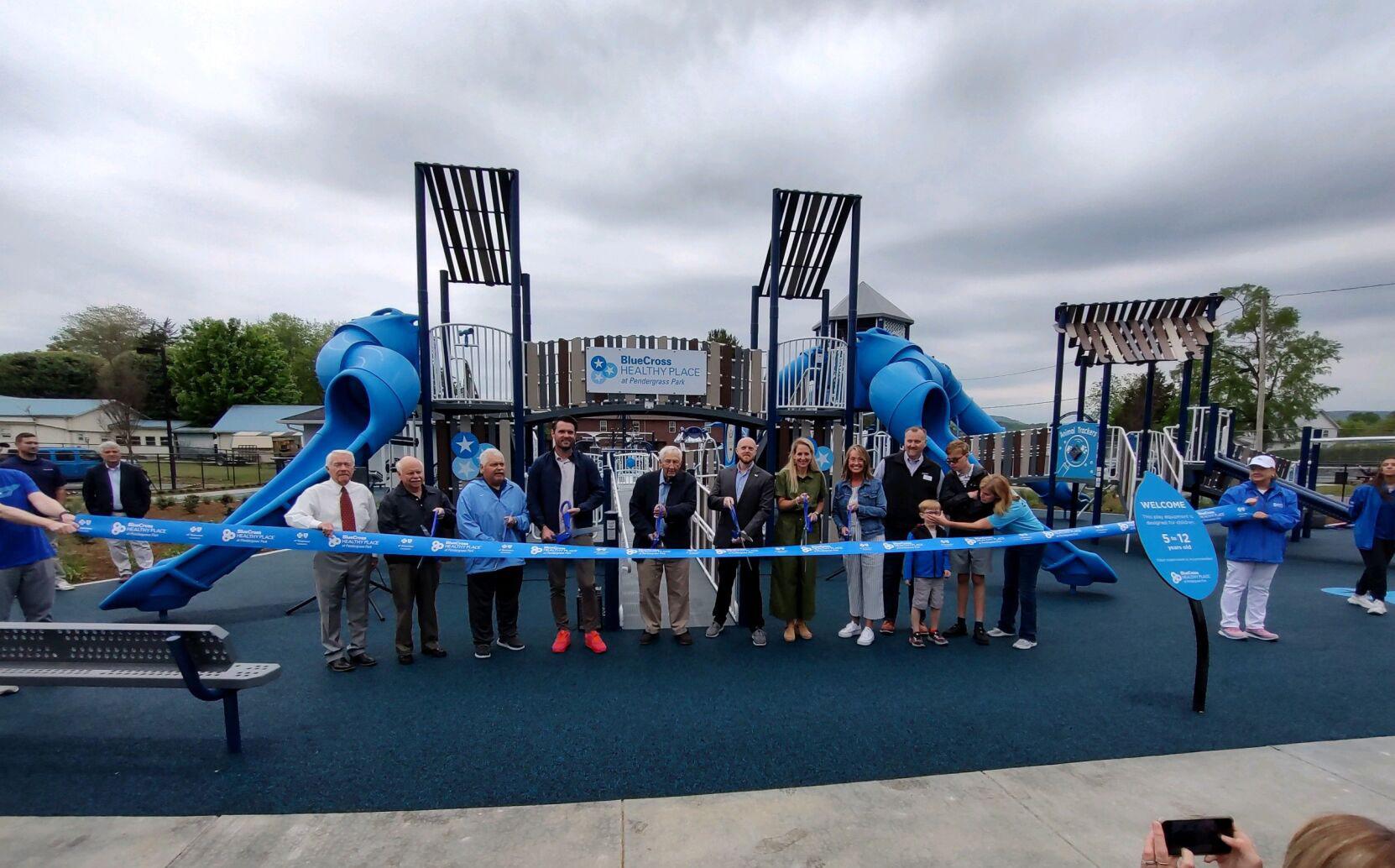
From snacks and quick meals to fine dining, find it all in Rhea County.
For those here in the wintertime, warm up with a hot chocolate, coffee or latte coupled with a hearty soup or hot sandwich.
On a summer afternoon, enjoy a glass of iced tea while overlooking the river from a restaurant patio or have a cone of ice cream sitting on a park bench under the shade of oaks.
Blackened salmon, wonton soup and prime rib are available to those ready to relax for
an evening meal.
Drive-through windows of national chains and local sandwich shops provide fast service for those eager to refuel before their next adventure.
Some restaurants schedule gospel singing groups during dinner hours.
Check advertisements for menu items, hours of operation and special features of restaurants. The wide variety of menu choices combined with excellent food quality make meals in Rhea County a special treat.



be found inside these stores.
Park and walk to the shops in the revitalized downtown district of Dayton or stroll into Spring City’s stores.
sures in nooks and crannies of antique stores, specialty shops and gift galleries.
Rare finds from estates are often purchased at local auction houses.
Souvenirs, vintage clothing and jewelry, locally-fired pottery and heritage antiques can all
Downtown areas in Spring City and Dayton, strip malls along the highways and freestanding stores offer numerous shopping opportunities throughout Rhea County.


Find freshly-made pastries, prints and originals from local artists and unique gifts.
Stop and discover trea -
Your shopping experiences can provide countless reminders of your good times in Rhea County.
Dayton is a participant in the MainStreet program of the Natural Trust for Historic Preservation.
The town was chosen to join with others across the nation to follow a strategic approach to revitalizing the downtown area. This preservation-based economic development tool enables communities to put new life into downtown districts by revitalizing their economies while preserving the character of their past. A welcoming archway, new fences at municipal parking areas, bricked cross walks, energy efficient windows and doors and fresh coats of paint on store fronts are all visual evidence of MainStreet Dayton’s work to encourage shoppers and entrepreneurs to be a part of the downtown district. A business resource center operated by MainStreet Dayton provides professional expertise to those considering a new downtown business. The MainStreet program has fostered the community’s planning and implementation of transforming changes to Dayton’s commercial and residential areas. Take a stroll through downtown Dayton, and see what exactly the MainStreet program has to offer.
MainStreet Dayton recently opened in a new location on Second Avenue called “The Business Centre,” which features MainStreet offices, as well as rentable office space for local businesses.
The Tennessee Strawberry Festival is by far the biggest event in Rhea County, and in 2025, it will be celebrating its 78th anniversary.
From its beginnings in the 1940s when it was only a one-day festival sponsored by the Dayton Lions Club, the festival has turned into a 10-day extravaganza each May full of events and activities, many of which are sponsored by the Dayton Chamber of Commerce.
The festival’s genesis was brought about after Rhea County boasted strawberry production as
Rhea County has a lot to celebrate, from national holidays like Independence Day and Christmas to the area’s rich history and culture involving agriculture and world-famous crops.
one of its principal businesses for almost half a century.
The county was known as the “Strawberry Capital of the World,” but production waned as the soil’s nutrients became exhausted.
Although the Lions Club had started the festival while the crops were dwindling, festivities continued and are going strong today.
The Strawberry Parade is the biggest crowd gatherer, as thousands of spectators come out from Rhea County and beyond to see a long lineup of floats, horses and everything in between.
Other much-anticipated events include the Strawberry Pageant,
which kicks off the festivities, the Ed Gentry Memorial Run, Family Fun Night, an old-fashioned carnival, the strawberry pie and cake baking contest, Strawberry Shortcake Night at Centennial Park, a plethora of local entertainment and gospel singing, food, crafts, an auction, a cruise-in, a pancake breakfast and the Distinguished Young Woman of Rhea County Scholarship Program, which polishes off the festival.
The festival typically begins the second week of May. For more information on the Strawberry Festival, visit www.daytonchamber. org/tnsf.



















It’s a special year for Rhea County’s annual Scopes Trial Play and Festival, as this year marks 100 years since the historical 1925 trial.
Celebrations for the 100th anniversary of the Scopes Trial kicked off on Friday with a banquet at Bryan College.
The evening’s keynote speaker was Pulitzer Prize-winning author Ed Larson, best known for his book “Summer for the Gods: The Scopes Trial and America’s Continuing Debate Over Science and Religion.”
The event also featured a special presentation of newly discovered Scopes Trial photographs, curated by the TN State Museum, Bryan College, and the Rhea County Historical Genealogical Society.
Step back in time to commemorate the 100th anniversary of one of America’s most iconic trials. The Scopes100 Centennial Celebration runs from March to July 2025, offering engaging events that highlight Dayton’s role in shaping national discussions on education, science and religion.
Experience history through dramatic reenactments, debates, and more. Highlights include:
• College Debate at the Courthouse (April 17): Bryan College Debate Team and a local celebrity panel tackle School Choice in the historic courtroom.
• Tennessee Strawberry Festival (May 5-10): The Great Berry Debate theme, featuring vendors, food and activities.
• Destiny in Dayton Drama (July 11-12): A live reenactment

of the Scopes Trial.
• Evolving Conflict Symposium (July 16-17): Experts discuss science, education, and religion at the courthouse.
• Historic Buttram Cemetery Tours (July 11-12, 18-19): Guided visits to the burial sites of key trial figures.
• Local History Expo (July 1819): Educational exhibits on Rhea County’s heritage.
• Play and Dinner (July 19): A 1920s-themed dinner on the courthouse lawn, followed by a dramatization of the Scopes Trial.
The Scopes100 Centennial is a collaboration between Bryan College, the Rhea County Historical Society, the Rhea Heritage Preservation Foundation, the Rhea County Department of Tourism, and the Rhea Economic and Community Devel-
opment Office. This event celebrates Dayton’s heritage and invites everyone to honor this history.
“Special thanks to Rhea County Executive Jim Vincent, Spring City Mayor Leon Locke, Dayton Mayor Hurley Marsh and Graysville Mayor Bill Crawley for their leadership,” organizers said. “We also extend our gratitude to Laura Travis, wife of Representative Ron Travis and long-time TN State Board member, for her invaluable guidance. Lastly, we sincerely thank Dr. Douglas Mann, President of Bryan College, for assembling the Scopes100 Centennial Celebration Committee. Don’t miss this historic event — join us in Dayton!”
Visit scopes100.com for tickets and details.


A relatively new festival for the Rhea County area, the Town of Spring City recently began holding an Autumn Festival in early October.
The event features food and craft vendors, plenty of activities for children, live music, bounce houses and much more.

Pumpkinfest is an annual tradition in downtown Dayton.
The festivities offer children an alternative to traditional Halloween activities that can include karaoke contests, live music, entertainment, prizes, inflatable bound houses, booths, games, a quilting competition and exhibit, face painting, mini train rides, a petting zoo and pony rides.
A pumpkin pie eating contest, costume contest and hayrides also highlight the festival as well as a free movie in Centennial Park.
PumpkinFest is held at the end of October.

The Rhea County Fair was instituted in 2008 after Rhea County commissioners approached the University of Tennessee Extension Office with the idea of developing the fairgrounds in Evensville.
Their efforts turned into the building of a picnic pavilion, youth exhibit building and a gazebo, along with the property’s original barn, all of which help promote and educate locals about agricultural and rural living in
Rhea County.
The annual fair has even won numerous state awards.
Activities and events during the fair include an antique car show and parade, horse show, chili cook-off, lawn mower races, pageants, old timers’ day, a patty drop, inflatable games, concessions and music.
The Rhea County Fair is typically held toward the end of August or the beginning of September.
Shake the Lake is Spring City’s Fourth of July celebration, normally held at Veterans Park during the holiday weekend.
The festivities typically begin in the morning with musical groups entertaining visitors to the park, followed by an assortment of races and contests throughout the day, including the annual Mr. and Miss Firecracker Pageant, an informal pageant open to all children. A fireworks show begins at dark.
FreedomFest is the City of Graysville’s Independence Day celebration, sponsored by the Graysville Fire Department and held at the city’s park, Kristopher’s Kingdom.
The event features food, music and water activities. Fireworks start at about 9:45 p.m., followed by more live music and a bonfire.

Spring City offers a Christmas parade on Front Street, which features floats, horses and school bands. Spectators can enjoy food and crafts the whole day.
Typically a week before the Christmas parade, citizens can peruse the Parade of Trees at the History Museum Annex and vote on their favorite tree made by Spring City Elementary School students.
The parade is usually held the second weekend of the month of December.
Despite the oft-nippy weather, Christmas time brings out flocks of locals to enjoy outdoor festivities in their towns.
Christmas downtown is typically held the first weekend in December, along Market Street. Special sales events are available at downtown stores, and festival-goers can view artists’ showcases at several businesses downtown as well.
Downtown Dayton hosts photos with Santa Claus. And the highlight of the day is the horse and carriage Christmas parade, held at 4:30 p.m. and followed by candlelight car -

oling in front of the Rhea County Courthouse.
The Rhea-diant Holiday Celebration is held each year in November. The celebration features unique activities including a VIP Reception, musical entertainment, a Holiday Shoppe, photos with Santa and children’s activities.
Over 1,100 guests are expected to walk through a winter wonderland filled with creatively decorated trees, browse among beautifully decorated wreaths, tablescapes, gift baskets and centerpieces as they select those items they want to bid on in the silent auction.

An act of the Tennessee state legislature established Rhea County in 1807. The Tellico Treaties of 1798 and 1805 between European settlers and Cherokee Native Americans ceded various Cherokee lands in East Tennessee,
opening the frontier.
Original boundary lines of Rhea County showed land taken from the established Roane County to the east and newly acquired Cherokee lands extending from Walden’s Ridge to the Hiwassee River.
Numerous acts, as late as 1889, have adjusted the size of Rhea County cutting out land to form the county of Meigs and parts of Hamilton County and moving individual farms into or out of adjoining counties.
The county was named for John A. Rhea, an early statesman who served as a delegate to the federal and state constitutional conventions, a U. S. Congressman and an official holding various local government positions.

Rhea was one of the founders of Blount College, later to become the University of Tennessee.
The home of WIlliam Henry, located about three miles north of Dayton, was the 1808 meeting place where settlers organized official functions of Rhea County.Justices of the first County Court {present day County Commission) were chosen. A sheriff, coroner, register, trustee, solici-
tor, and ranger were also named. In 1810 the first Circuit Court was organized at the Henry home. A jail, post office, a school and a church were added. The Hen ry Place served as the center of Rhea govern ment until 1812 when county leaders decided to move the county seat to Washington, a newly developed town eas ily accessible by the the Tennessee River.


The planned town of Washington, which included govern- Rhea County was named for John Rhea, above, a statesman and U.S. Congressman.








ment buildings, shops, a school, church and residential lots was established in 1812. Tennessee Academy, incorporated by an act of 1809 of the state legislature, opened in Washington in 1818, providing a classical curriculum to students throughout the area. Monmouth Presbyterian Church, organized in 1820, constructed the first church building, which was shared with members of other denominations who settled in Washington.
President Andrew
Jackson held a land grant in Washington.
Judge David Campbell, an early resident of Washington, was a celebrated Revolutionary War veteran whose leadership led to a prominent judicial career, serving as a Superior Judge of the State of Franklin, the Territory South of the Ohio River and the Supreme Court of Tennessee.
At the time of his death in 1824, Campbell was preparing for a move west to accept President James Madison’s appointment to
become Superior Court Judge of the Southwest Territory in present day Mississippi.
A historic roadside marker in Washington designates the place of burial of Judge Campbell.
The Civil War was
both divisive and destructive to Rhea County. Military records indicate that a large majority of Rhea County’s enlisted men fought for the Confederacy. However, from 1863 until the end of the war, the county was under the control
of Union troops. Productive farms in the Tennessee Valley were plundered by troops seeking food. Buildings were burned. Neighbors were divided in their political loyalties.
A group of young women in Washington organized a military company called The Spartans.
This female company of Confederate sympathizers was not involved in combat but rather provided food, enemy-troop information and encouragement to family and friends.
The Union army, tired of The Spartans’ activities, arrested the company and had them tried in Chattanooga.
The Union judge ordered the women to disband and to take an oath of allegiance
to the country. The same judge ordered the arresting officers to provide a meal for the women and return them to Rhea County.
The judge further reprimanded the officers for their frivolous actions in arresting the women.
The town of Washington, which had served the county as the center of government, commerce, education and culture during the early and middle 18th century, exhibited the ravages of war and defeat following the Civil War.
Reconstruction in Rhea County was greatly affected by the route of the Cincinnati Southern Railroad.
The laying of the tracks through the valley towards Chattanooga completely

bypassed Washington and ran instead through the area where the county’s three incorporated towns developed.
Washington, once thriving and prosperous, never recovered from the devastation. The town was never rebuilt. Today, only a memorial monument along Highway 30 gives any evidence of the existence of the bustling town of Washington of the 1800’s.
In the mid 1800’s, Spring City, located in the northern part of the county, was a sparsely populated farming community called Walnut Grove.
The fertile land attracted settlers who expanded the development of the area and changed the name of the settlement to Spring City. The name may have been chosen because of nearby Rhea Springs, which provided water for the area.
Regularly scheduled stops by the railroad began in Spring City in 1880. The convenient transportation provided an efficient means of exporting agricultural products.
The work of Spring City farmers was an important part of the growing Rhea County strawberry industry. This area became a national leader in the production of strawberries, reporting annual exports as high as $500,000.

Several industrial operations also enjoyed the benefits of the rail service.
Lumber, tanbark, lime, flour and furniture were exports of the area.
Spring City Cannery, Spring City Hosiery Mill and Southern Silk Mill were all significant employers in the development of the area.
The construction of Watts Bar Dam by the Tennessee Valley Authority in the 1940’s marked the highpoint of economic growth for the Spring City area.
The abundance of jobs and the influx of new families greatly impacted the development of the area.
Flood control, electricity production and recreational sites were benefits of the completion of the dam.
Today, many enjoy camping and fishing on the lakes and shorelines throughout the Watts Bar area.
Residents profit financially from the business opportunities provided by the lakes, rivers and shores.
of a settlement mentioned in 1835 records as Smith’s Crossroads.
Again, the railroad is credited with being a major influence in the growth of the area.
In the 1870’s, railroad officials identified the depot stop as Sequatchie. The locals balked, changing the name instead to Dayton.
Growth of the Dayton area led to the decision by the county’s residents to move the seat of county government from Washington to Dayton.
Rail traffic trumped riverboat transportation, further reducing the prominence of Washington. Additionally, Washington never recovered from its devastation during the Civil War.
Rail service was important to the Dayton Coal and Iron Company, an early industry in the Dayton area. Financial investments from English and Scottish entrepreneurs purchased land rich with natural resources needed for the production of pig iron.
mining accidents and deaths of major investors were some of the many difficulties that led to bankruptcy, sale and eventual closure of the industry that had provided significant growth to the Dayton area.
A remaining company building was later remodeled as a restaurant.
Customers at Fehn’s 1891 House can see the original chalk rail and stage used by employees’ children when the restaurant was a parochial school.
Agriculture was also important to the town’s economy. Rich land in the Dayton area grew
large crops of strawberries. The town designated itself as the “Strawberry Capital of the World.”
Beginning in 1948, the Dayton Chamber of Commerce has sponsored the annual Tennessee Strawberry Festival to celebrate the harvest. Tomatoes, apples, melons and garden vegetables are dominant crops today.
The manufacturing industry has been an important part of the area’s economy. Textiles, polymers, furniture and recreational vehicle components are among major production industries.



The history of Dayton began with the 1820 purchase of 60 acres of land by Massachusetts native, William R. Smith and the development
Begun in the late 1800’s the company employed as many as 2,400 individuals. In 1889, the Chattanooga Times reported a daily payroll of over $20,000 for the company’s operations. Labor disputes,



Today’s municipality in the southern part of the county began as a small settlement of farmers.
The complexion of the settlement was changed by the operation of the Cincinnati Southern Railroad through Graysville, so named for an early settler, Billy Gray.
Three distinctive communities emerged in Graysville.
The Fox heirs opened a coal mine on family property. Though the company changed owners several times, the mining community provided employment and a way of life for many residents until the 1940’s.
Advent Town was settled and populated by members of the Seventh-Day Adventist Church. In addition to the church, an academy serving both local and boarding students and a large sanitarium were operated in the Adventist community.
The third area was downtown Graysville. In earlier days, the town included a state bank, a post office, train depot, a large brick school, hotel, drugstore, barber shop, restaurant, hosiery mill, doctor’s office and several churches.
A short line, which
local residents called the “dinky-track,” provided daily transportation between Graysville and Dayton.
Two personalities stand out among Graysville’s many residents.
Curly Fox (19101995) was celebrated as an American old-time country fiddler. Live performances throughout the country, radio and televisions shows and numerous records all showcased his musical talents. He and his wife, Texas Ruby, were members of The Grand Ole Opry.
The second, Staff Sgt. Clifford Hambrick, was a highly decorated soldier whose heroic actions in the World War II invasion of North Africa reportedly helped to turn the tide for the Allies.
Rhea County played a role in the dark period of American history known as the Trail of Tears.
The Indian Removal Act of 1830 declared the federal government’s intent to move Native Americans off of their homelands east of the Mississippi. Despite what appeared to be a favorable ruling by the U.S. Supreme Court, which would have al-
lowed the Indians to retain their land, soldiers forced the Natives out of their homes and into stockades, where they were held in preparation for the relocation.
Many Cherokees left Red Clay, Tenn., in Bradley County for the devastating journey west.
One of the first challenges was the crossing of the Tennessee River at Blythes Ferry, an established point for transportation across the river.
William Blythes, a landowner and businessman with Cherokee ancestry, and his Cherokee wife had established
the ferry in 1809.
A historic marker on Highway 60 acknowledges the importance of Blythes Ferry, replaced in 1994 by a bridge, in moving the Cherokees across the River.
Although they were not required to move, the Blythes family of Rhea County eventually joined Smith’s Crossroads, which would become Dayton, in 1838 where several Cherokees were buried.
Morgan Springs on Walden’s Ridge was identified as an overnight camp for Cherokees and soldiers.
Signs on Highway 60, Highway 27 and High-
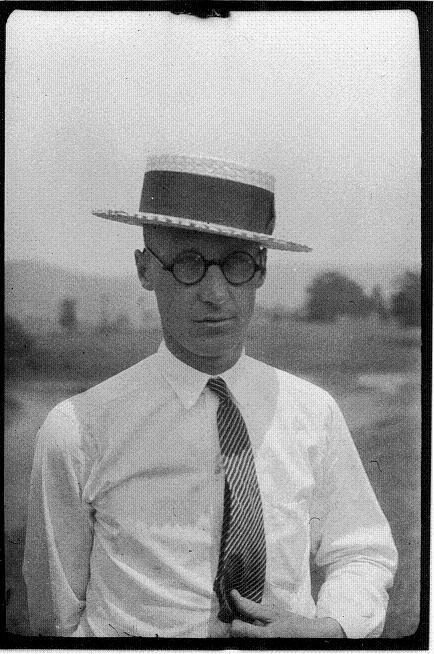
way 30 trace the route of the Trail of Tears through Rhea County.
A few hot July days during the summer of 1925 produced international renown for the small southeastern town of Dayton.
The Scopes Trial brought world famous lawyers, numerous journalists and spectators to the town.
The history of the trial’s beginning is an example of the local people’s ingenuity in responding to problems.
Dayton Coal and Iron Company. Taking ore from the mines in the Morgantown area provided jobs for many local residents. Additional jobs were available in the company’s offices, the furnace and foundry.
A rail system that connected the mines to the foundry and on to the Tennessee River at Bell’s
erations were disrupted by explosions in the mines resulting in several deaths, falling market prices and labor strikes. Dayton Coal and Iron Company had changed owners, and efforts to keep the company afloat were failing.
The population of the area continued to decline as families moved away looking for work.
state legislature had passed the Butler Act, forbidding the teaching of evolution in the public schools.
Mining officials and community leaders were looking for ways to boost the sagging economy.

In the early 1900s the economy of the area depended heavily on the
Landing employed more men as the iron ore was changed from the raw product to a saleable good. In 1890, the population of Rhea County was growing and the area was thriving.
By 1925, mining op-
An event in Nashville during 1925 seemed to provide a possible answer.
In February of that year, the Tennessee

John Butler, a legislator from Middle Tennessee had become concerned about students being taught scientific theory, which contradicted his understanding of biblical teaching. Soon after the legislation was signed by the governor, the American Civil Liberties Union advertised financial support for an individual who would test the law. George Rappleyea, a mining official, suggested that Dayton be the place for the test case of the Butler Act. A trial








would bring journalists and visitors to the town with tourist dollars for immediate use.
Perhaps the publicity given to the town would show the area’s strengths and convince an entrepreneur to consider an investment in Dayton.
Historical accounts indicate that it was not a concern over the question of creation versus evolution that brought the Scope’s Trial to Dayton.
When the trial came to Dayton, with it came William Jennings Bryan and Clarence Darrow, two nationally known figures of the day.
John T. Scopes, a firstyear teacher at Rhea Central High, agreed to be prosecuted for the teaching
of evolution. It is questionable whether Scopes actually taught evolution since he was primarily a math teacher, and the idea for the test case came after the ending of the school year; nonetheless, Scopes admitted that he had taught evolution and was convicted of breaking the law.
It was Mr. Darrow’s intent to appeal the conviction in hopes of bringing about a change in the law. A technicality in court procedure stemming from the judge setting Scope’s fine led to the case being thrown out.
The days following the trial had an even greater impact on the future of Dayton. William Jennings Bryan died in Dayton dur-
ing an afternoon nap.
The people of Dayton had developed a love for Mr. Bryan and wanted to memorialize him. Through the efforts of many across the nation, a school based on the teaching of Christian principles was established in Dayton. The school enrolled its first class in 1930.
Bryan College became the economic boost the leaders of 1925 were seek-
ing. The 2005 economic impact statement of the college reported an annual impact of $40 million on the economy of the area resulting from the operation of the educational institution. The establishment of Bryan College, a direct result of the trial, has greatly impacted the community economically, educationally and culturally, beginning in the 1930’s and continuing through today.
